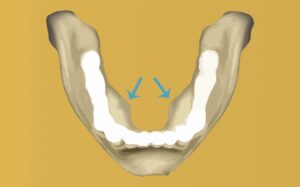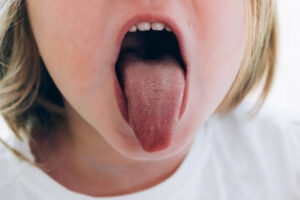What is it? | Working | Is it safe? | Direction for use | Benefits | Side effects | Precautions | Conclusion
Whether you are suffering from early gum disease (gingivitis) or advanced gum disease (periodontitis), your oral care expert might recommend Chlorhexidine gluconate oral rinse. This prescription-only oral rinse is highly effective in reversing gingivitis, reducing plaques, and treating periodontitis. Several studies suggest that it is a highly effective oral rinse, but only when used in high concentration: 1200 parts per million.
What is Chlorhexidine Gluconate Oral Rinse?
Chlorhexidine gluconate is a great bacteria killer, designed specifically to be effective against gram-positive and gram-negative bacteria. Since it is a proven bacteria killer, dentists use it for cavity prevention and infection control. This germinal mouthwash is rated as the most effective mouthwash, recommended for limited use, usually for one or two weeks, to treat swelling, bleeding, inflammation that comes with gingivitis. The effectiveness is unquestionable, but it could cause serious allergic reactions in some cases. So, if you notice hives, cold sweats, difficulty in breathing, or any kind of swelling, you should immediately get emergency medical help to control the situation. It is not for treating all types of gingivitis, but to treat the condition. So, you should use it along with your routine brushing and flossing to treat oral conditions as per the instruction of your oral health expert. The antimicrobial property of Chlorhexidine gluconate oral rinse helps in reducing the number of bacteria count in the mouth, thus reducing swelling, redness, or bleeding.
How Does Chlorhexidine Gluconate work?
Chlorhexidine Gluconate is the gluconate salt form of chlorhexidine, used as an antiseptic agent with topical antibacterial activity. It is positively charged and thus destroys the cell surface of negatively charged microbes. Following the destruction of the surface, it intrudes the cell and leaks intracellular components, leading to the death of the cell. Application of Chlorhexidine Gluconate might vary, so use it as prescribed by your dentist to avoid any serious side effects. In some cases, it could be directly applied on the gum-line at home or by the doctor.
Is chlorhexidine gluconate safe?
Chlorhexidine gluconate safety is related to the concentration level. It is a highly potent bacterial killer, and most of the drugs keep the concentration level of Chlorhexidine as low as 0.2%. So, it is safe for keeping the mouth bacteria-free. However, you should not use it if you are allergic to chlorhexidine, as this could lead to anaphylactic reactions.
How to use?
This antibacterial oral rinse is highly potent, so use it as directed by your oral health expert. If you are not allergic, follow these steps to use Chlorhexidine Gluconate safely to treat the conditions of the gums.
- Brush your teeth using a soft-bristled brush and then floss to clean your mouth. Once done with cleaning, rinse your mouth with the Chlorhexidine Gluconate Solution. For better results, you can repeat the exercise twice daily or do as told by your doctor.
- Measure 1/2 ounce (15 ml) of the solution and swish the solution in your mouth for around 30 seconds and then spit it out. It is designed for mouthwash, so don’t gulp it.
- Don’t try to mix it with any other substance, as adverse chemical reactions could make it dangerous.
- Doctors usually recommend no washing, brushing, eating, or drinking for at least 30 minutes.
- Dosage matters, so use it as prescribed by your doctor to get quality results without side effects.
- It is for temporary use, so stop overusing it as it could damage your gums and soft tissue.
Benefits
The accumulation of a film of plaque or bacteria on your teeth for long could cause inflammation of gums, called gingivitis. Although it is a non-destructive periodontal disease, if left untreated for long could lead to periodontitis. Chlorhexidine Gluconate could help you control gums conditions bleeding, bad breath, inflammation, and receding gums. Chlorhexidine Gluconate is highly effective in treating gum conditions as it reduces bacteria count in your mouth significantly. In just a few weeks, you can reverse gingivitis conditions and let your gums heal quicker. Before you start the Chlorhexidine Gluconate, you should check whether you are allergic to it or not. If you are suffering from periodontal disease, your dentist will suggest you use the solution differently. It is strictly prohibited for people younger than 18 years old. If you are pregnant or breast-feeding, you should better seek oral hygienist advice before starting this antibacterial oral rinse medication.
Side Effects
If not used as per the prescribed guideline, it could affect your oral and general health. Here are some of the side-effects you should be aware of before you start using Chlorhexidine Gluconate:
- Chlorhexidine is known to affect the fibroblast formation in the periodontal pocket. So, it disturbs the healing process, thus prolonging the healing phase after reattachment treatment.
- It is known for the cytotoxic effect on cells, thus making healing post scaling and root-planing procedure difficult.
- Allergic reaction could cause anaphylaxis, so it should not be used if there are open wounds in the mouth.
- It may stain teeth, tongue, and restorations if you fail to rinse thoroughly.
- One should not use water immediately because water renders the solution ineffective and increases bitterness. Some users complain of a “metallic” aftertaste, which could remain for several hours. In some rare cases, the alteration in taste could last longer than the treatment period.
- Another side-effect of this antibacterial oral rinse is calculus formation.
Precautions
Your oral care consultant might prescribe chlorhexidine gluconate mouthwash to treat gingivitis conditions. You are aware of the side-effects, so you should read the label in detail and discuss how to use it safely to get the desired result. Here are some of the precautions you need to take while using this solution:
- Tell your doctor about your allergies, s/he will check allergic reactions to chlorhexidine and prescribe alternative mouthwash accordingly.
- Be careful about dosage, as an overdose could affect your oral health. Doctors recommend using 0.5 fluid ounces undiluted twice daily for 30 seconds.
- It has been designed to kill oral bacteria, so don’t ingest it. Spit it out after rinsing.
- Use the solution after your oral care regimen and avoid brushing, rinsing, or eating for at least 30 minutes.
- If you have periodontitis, you might need separate treatment as use of chlorhexidine could worsen the situation.
- You should better avoid using this solution if you are pregnant or breast-feeding.
- Visit your dentist regularly to check the progress of treatment.
- Keep it away from kids as it is not designed for people below 18 years.
Cost
Cost is not a matter of concern here because most of the popular brands of Chlorhexidine, Paroex, Peridex, Periogard, are pretty inexpensive. Generic versions of chlorhexidine are relatively cheaper. The average retail price of Chlorhexidine Gluconate in the US is around $14. Depending on concentration and brand, it could vary. So, choose your brand smartly to save some money.
How long does chlorhexidine gluconate take to work?
The duration of the use of Chlorhexidine Gluconate will depend on the severity of your gingivitis. Your doctor will examine your gums and prescribe a specific concentration of Chlorhexidine Gluconate. Oral rinse usually contains only 0.2% Chlorhexidine Gluconate, so the treatment period will vary, accordingly. Oral care experts recommend the temporary use of this oral solution, which could be around 2-3 weeks. If the doctor advises, you can use it for a longer period. You can control and treat gingivitis conditions with Chlorhexidine Gluconate, but the best is to maintain standard oral care practices. Clean your teeth using soft-bristled brush and floss teeth daily to keep gums healthy.
What to do if dosage goes wrong?
If somehow you have overdosed and are showing signs like breathing difficulty, irritation, hives, etc, then one should immediately call 911. Alternately, US residents can call their local poison control center. Keep all medication, dosage, and usage details ready for immediate medical assistance. If you have missed your dose, you can rinse your mouth anytime, but not near mealtime or when your next dose is near. It is better to skip your missed dose and continue with your regular dose at a scheduled time.
Conclusion
The effectiveness of Chlorhexidine gluconate in killing bacteria is well proven, but all depends on concentration, dosage, and discipline. If you will use water just after using the solution, it will make the solution ineffective and make your mouth bitter. So, don’t use any other drug or herbal products, at least during the treatment, as this could be risky. Drug interactions are possible, so inform your doctor about other medications. You will have healthy gums in just a few weeks to give strength to your glistering teeth.
Sources:
- https://onlinelibrary.wiley.com/doi/abs/10.1111/j.1600-0765.1970.tb00696.x
- https://www.researchgate.net/publication/6866180_Rinsing_with_chlorhexidine_gluconate_solution_after_brushing_and_flossing_teeth_A_systematic_review_of_effectiveness
- https://www.cochranelibrary.com/cdsr/doi/10.1002/14651858.CD002284.pub2/full
- https://onlinelibrary.wiley.com/doi/abs/10.1111/j.1600-0722.1971.tb02001.x
- https://www.ncbi.nlm.nih.gov/pmc/articles/PMC4588801/
- https://www.sciencedirect.com/science/article/abs/pii/S0147956303002012



